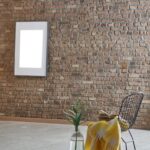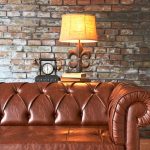Korean home decor is a fascinating blend of tradition, aesthetics, and cultural heritage. This article embarks on a journey to explore the art of Korean home decoration, delving into the unique style influenced by the country’s rich history and cultural background. From traditional architecture to harmonious design principles, minimalistic elegance to nature-inspired elements, this exploration will showcase the beauty and intricacy of Korean home decor.
Rooted in traditional Korean architecture, known as Hanok, Korean home decor draws inspiration from its distinct characteristics. The layout and design of these traditional houses greatly contribute to the decorative choices made by Koreans. Appreciation for natural materials, clean lines, and uncluttered spaces form the basis of Korean home decor’s minimalistic elegance. The philosophy of balance and harmony also plays a central role in creating peaceful and soothing environments within these homes.
Nature is an integral part of Korean home decor as well. By bringing the outdoors in through houseplants, floral patterns, and natural materials, Koreans aim to create a sense of calm and tranquility within their living spaces.
The color palette used in Korean decor is carefully chosen to tell a story and carries symbolic meanings that influence the overall ambiance of a home. Additionally, preserving cultural heritage is vital in Korean home decoration as traditional arts and crafts like pottery, paper art, and traditional paintings play an essential role in adding cultural richness to the interior.
By blending traditional techniques with modern technology and incorporating personal touches like family heirlooms or meaningful artifacts, contemporary Korean homes achieve a harmonious fusion between tradition and modernity. This juxtaposition creates unique spaces that reflect individuality while embracing their roots.
Through this exploration into the world of Korean home decor, readers will discover key aspects such as harmony, minimalism, cultural preservation that can inspire them in creating beautiful and meaningful living spaces within their own homes.
Traditional Korean Architecture
Traditional Korean architecture, known as Hanok, serves as the foundation for the unique and distinctive home decor style in Korea. Hanok houses are characterized by their practical yet elegant designs, reflecting the harmony between humans and nature. Understanding the layout and design of these traditional houses is essential in comprehending Korean home decoration.
1. Distinct Characteristics of Hanok:
Hanok houses are designed to coexist harmoniously with their natural surroundings. They typically have a rectangular or square shape with curved roofs that blend seamlessly with the landscape. The use of natural materials like wood, stone, and clay enhances the connection to nature and creates a peaceful atmosphere within the home.
2. Spatial Considerations:
The layout of a Hanok house plays a crucial role in determining how space is utilized and decorated. The main areas, such as the living room (sarangchae), bedrooms (anbang), kitchen (byeolgungak), and study (seodang), are arranged around a central courtyard or garden called madang. This open space allows for natural light and ventilation while creating a sense of unity between different parts of the house.
3. Design Influences on Decor Choices:
The design principles seen in traditional Korean architecture directly influence the decorative choices made within these homes. The emphasis on simplicity, balance, and natural materials can be observed in various aspects of Korean home decor, from furniture selection to color schemes.
4. Furniture and Accessories:
In traditional Korean homes, furniture was minimalistic yet functional. Low-rise wooden tables (chobanji) were used for dining or as makeshift desks, while cushions made from silk or cotton provided seating comfort on heated floors known as ‘ondol.’ Handcrafted wooden cabinets adorned with brass fittings were used for storage purposes while maintaining an aesthetic appeal.
5. Decorative Elements:
Korean home decor incorporates various decorative elements inspired by nature and cultural symbolism. Ornamental window screens (hanji) made from traditional Korean paper add a touch of elegance and privacy to the interior. Delicate porcelain vases, known as buncheong, are often displayed as decorative pieces or functional ceramics for flowers.
Korean home decoration draws inspiration from the architectural design of Hanok houses. The traditional layout, spatial considerations, and use of natural materials influence the overall aesthetic and decorative choices found in Korean homes. By understanding the foundation of traditional Korean architecture, one can gain insight into the essence of Korean home decor and appreciate its beauty and cultural significance.
Harmony and Balance
Korean home decor is deeply rooted in the principles of harmony and balance. Koreans believe that creating a peaceful and soothing environment within their homes enhances their overall well-being and brings them closer to nature. This focus on balance extends beyond just the physical aspects of interior design, but also encompasses a harmonious coexistence with nature and a sense of tranquility throughout the space.
Philosophy of Balance
One of the fundamental principles of Korean home decor is achieving balance in every aspect of the interior design. This philosophy can be seen in the careful arrangement of furniture, artwork, and decorative elements. Koreans strive for an equilibrium between form and function, where each item has a purpose and contributes to the overall aesthetic.
This principle also extends to the use of color palettes. Koreans often opt for soft, neutral tones such as white, beige, or pastel shades to create a serene atmosphere within their homes. The idea behind this choice is to evoke a sense of calmness and mindfulness, allowing individuals to escape from the chaos of daily life.
Creating Peaceful Spaces
Another core principle in Korean home decor is creating spaces that promote peace and tranquility. Koreans believe that harmonious environments have a profound impact on their mental well-being and can even influence positive energy flow within the space. As such, they meticulously plan their interiors to include comfortable seating arrangements, open spaces with natural light, and elements that foster relaxation.
The concept of feng shui also plays a significant role in Korean home decor. Koreans consult feng shui experts or refer to traditional guidelines when arranging furniture and deciding on room layouts. The goal is to optimize positive energy flow throughout the space by considering factors such as access to natural light, proper ventilation, and incorporating natural materials like wood or stone.
In essence, harmony and balance are at the core of Korean home decoration. By embracing these principles both intellectually and aesthetically, Koreans create living spaces that are not only visually pleasing but also conducive to their overall well-being. Through careful attention to detail and an appreciation for nature, Koreans have established a unique style of home decor that emphasizes tranquility and a deep connection with the surroundings.
Minimalistic Elegance
When it comes to Korean home decor, simplicity is paramount. Koreans prioritize minimalism in their decoration, aiming to create a serene and calming atmosphere. This emphasis on minimalistic elegance can be seen throughout their homes, from the clean lines and uncluttered spaces to the choice of natural materials.
Clean lines are a defining characteristic of Korean interior design. Furniture and architectural elements often feature simple straight lines, without ornate details or embellishments. This minimalist approach creates a sense of harmony and orderliness in the space.
Uncluttered spaces are also highly valued in Korean decor. The idea is to create an environment free from unnecessary distractions or visual overload. By removing excess furniture and accessories, Koreans allow each piece to stand out and make an impact. This also contributes to a sense of calmness and tranquility within the space.
Natural materials play a significant role in achieving minimalistic elegance in Korean decor. Wood, stone, and bamboo are commonly used, as they bring a sense of warmth and connection with nature into the home. These materials are often left in their natural state or finished with simple treatments that highlight their inherent beauty.
Korean home decor exemplifies simplicity at its finest. By prioritizing clean lines, uncluttered spaces, and natural materials, Koreans create an atmosphere that promotes calmness and tranquility. Embracing minimalistic elegance allows for a more mindful living experience where one can truly appreciate the beauty of each individual element within the space.
| Characteristic | Description |
|---|---|
| Clean Lines | Furniture and architectural elements feature simple straight lines without ornate details. |
| Uncluttered Spaces | Excess furniture and accessories are removed to create a visually clean and calm environment. |
| Natural Materials | Wood, stone, and bamboo are commonly used for their natural beauty and connection with nature. |
Nature-Inspired Elements
In Korean home decor, nature holds a significant place of importance. The belief in harmonizing with the natural world is deeply rooted in Korean culture, and this philosophy is reflected in the way Koreans decorate their homes. By incorporating earthy elements and bringing the outdoors in, they aim to create a sense of calm and tranquility within their living spaces.
One of the ways Koreans infuse nature into their homes is through the use of houseplants. Indoor plants not only add a touch of greenery but also contribute to improving air quality and creating a relaxing atmosphere. Popular choices for houseplants in Korean decor include ferns, orchids, and bamboo. These plants are often arranged throughout the living spaces, on windowsills, or displayed prominently on stylish plant stands.
Floral patterns are another way nature finds its way indoors. Traditional Korean floral patterns feature delicate blossoms such as cherry blossoms, peonies, and lotus flowers. They can be found on wallpaper, upholstery fabrics, or decorative ceramics. These floral motifs bring a sense of elegance and serenity to the surroundings.
Besides houseplants and floral patterns, natural materials play a vital role in bringing the outdoors in Korean decor. Wood is commonly used for furniture pieces such as coffee tables, shelves, and bed frames. Its warm tones and organic textures evoke a connection to nature that enhances the overall ambiance of the space. Stone accents are also utilized to add a sense of grounding and stability.
By incorporating these nature-inspired elements into their homes, Koreans create an environment that promotes relaxation and tranquility. By doing so, they strive to achieve balance not only within their own personal spaces but also with the natural world around them.
Color Palette and Symbolism
In Korean home decor, the choice of colors plays a significant role in creating a specific ambiance and telling a story within the space. Koreans believe that colors have symbolic meanings and can affect the energy and mood of a room. Let’s explore the significance of color choices in Korean decor and unveil the meanings behind specific colors.
- White: White is often used as a primary color in Korean homes due to its association with purity, cleanliness, and simplicity. It represents new beginnings and is believed to bring positive energy into the space. White walls or furniture are commonly used as a canvas for vibrant accents, allowing other elements in the room to stand out.
- Red: Red holds great importance in Korean culture as it symbolizes passion, joy, and bravery. It is often used sparingly to create focal points or bring vitality to a room. A red door or red decorative accents can add warmth and depth to an otherwise neutral space.
- Blue: Blue represents tranquility, peace, and calmness in Korean home decoration. It is commonly found in nature-inspired elements such as wallpaper or upholstery with floral patterns featuring delicate shades of blue. This color brings a sense of serenity to the space and helps foster relaxation.
- Black: Black is considered an auspicious color in Korean decor, symbolizing power, protection, and elegance. It is often used sparingly or combined with natural materials like wood for contrast and sophistication. Adding black accents through furniture or decorative pieces can create a sense of drama while maintaining balance.
- Yellow: Yellow signifies happiness, wealth, and luck in Korean culture. It is often incorporated through artwork or small accessories like cushions or vases to bring positive energy into the space. Yellow also adds brightness and warmth to rooms with limited natural light.
By understanding the symbolic meanings behind different colors, homeowners can carefully choose their color palette to create a specific atmosphere and tell their own unique story within their Korean-inspired home decor.
Can include an unordered list if desired:
- White: purity, cleanliness, simplicity
- Red: passion, joy, bravery
- Blue: tranquility, peace, calmness
- Black: power, protection, elegance
- Yellow: happiness, wealth, luck
Traditional Art and Crafts
One of the key elements that sets Korean home decor apart is the incorporation of traditional art and crafts. These art forms play a vital role in preserving Korea’s rich cultural heritage and adding a sense of authenticity to the interior design. From pottery to paper art, these traditional crafts are not just decorative items but also reflections of Korean history and craftsmanship.
Pottery holds a special place in Korean culture, and it is often used as both functional and decorative pieces in homes. The intricate designs and vibrant colors of Korean pottery make them eye-catching additions to any space.
From celadon porcelain with its iconic blue-green hues to white porcelain with delicate floral patterns, each piece tells a unique story. These pottery pieces are meticulously crafted using traditional techniques that have been passed down through generations, ensuring that the art form remains alive today.
Another traditional craft that plays a significant role in Korean home decoration is paper art or hanji. Hanji refers to traditional handmade paper made from mulberry trees, which has been used for centuries for various purposes including interior decorating. Hanji is lightweight yet durable, making it suitable for creating screens, lanterns, window coverings, fans, and even furniture. These hanji creations add an ethereal touch to the overall aesthetic while preserving the historical aspect of Korean craftsmanship.
In addition to pottery and paper art, traditional paintings also contribute to the cultural richness of Korean home decor. Traditional Korean paintings often depict landscapes, nature scenes, folklore stories, or symbolic motifs such as birds or flowers.
These paintings are characterized by their use of bold brushstrokes and vibrant colors that capture the essence of Korean artistic expression. By incorporating these paintings into their homes, Koreans not only showcase their appreciation for fine art but also keep their cultural heritage alive.
By embracing traditional arts and crafts in their home decor choices, Koreans pay homage to their roots while infusing unique character into their living spaces. These traditional elements bring a timeless beauty to Korean homes, reminding both the inhabitants and visitors of the cultural richness that lies within.
Whether it’s a beautifully crafted pottery vase or an intricately woven hanji screen, each traditional art piece serves as an anchor for cultural preservation and a reflection of Korea’s artistic legacy.
Modern Influences
Fusion of Old and New
In modern Korean home decor, there is a delicate balance between preserving traditional aesthetics and incorporating contemporary elements. Korean homes are a reflection of the country’s rich cultural heritage, but they also embrace the advancements and influences of the modern world. This fusion of old and new creates a unique and harmonious space that pays homage to tradition while embracing the convenience and functionality of modern living.
One way that Koreans blend traditional and contemporary styles in their homes is through furniture choices. While traditional Korean furniture may be sparse, low to the ground, and made of materials like wood or bamboo, modern Korean homes often incorporate more comfortable seating options such as sofas or armchairs. However, these pieces are still designed with clean lines and simple silhouettes that complement the minimalist aesthetic.
Technological Integration
Another way that Koreans blend tradition with contemporary style is through the integration of technology into their home decor. Innovative technology has become an essential part of everyday life, and Korean homeowners find ways to seamlessly incorporate it into their interiors. For example, traditional paper lamps may now feature LED lights for energy efficiency while maintaining the allure of soft, warm lighting reminiscent of traditional lanterns.
Smart home systems are also commonly found in modern Korean homes. These systems allow homeowners to control various aspects of their living space using smartphones or voice commands, making daily tasks more convenient.
Artistic Interpretation
Modern Korean home decor often showcases artistic interpretations that combine both traditional and contemporary elements. This can be seen through unique artwork pieces or decorative objects that reflect both old traditions and new ideas. For instance, a traditional painting might be displayed alongside abstract artwork created by a contemporary artist. By bringing together different artistic styles, modern Korean homes create visually compelling spaces that tell stories about both past and present.
Overall, blending traditional and contemporary styles in Korean home decor allows for a harmonious and culturally rich living space. By preserving the essence of tradition while embracing modern influences, Koreans create homes that are unique, functional, and aesthetically pleasing. This fusion exemplifies their ability to adapt to changing times while remaining connected to their cultural roots.
Personal Touches
In the world of Korean home decor, customization and individuality play a significant role. While there are overarching principles and styles that guide Korean interior design, it is the personal touches that truly make a house a home. Koreans believe in creating a space that reflects their unique personalities, values, and family history.
One way Koreans add personal touches to their homes is through the use of family heirlooms and meaningful artifacts. These items hold sentimental value and serve as a connection to their heritage. Whether it be antique furniture passed down from generation to generation or cherished trinkets collected over time, these pieces infuse a sense of history and nostalgia into the overall decor.
Another way Koreans express their individuality is through personal artwork. Many Korean homes feature paintings, calligraphy pieces, or sculptures created by family members or local artists. This not only adds artistic flair but also showcases the creativity and talents within the household.
To provide inspiration for readers interested in adding personal touches to their own homes, here are some ideas commonly seen in Korean decor:
1. Displaying family portraits or photographs in decorative frames 2. Incorporating handmade crafts or DIY projects into the decor 3. Creating a gallery wall with artwork by family members or favorite artists 4. Designating an area for a small shrine or altar dedicated to ancestors 5. Using personalized textiles such as embroidered cushions or handwoven tapestries By incorporating these personal touches, Koreans create spaces that aren’t just beautiful but also deeply meaningful and reflective of their unique identities.
| Personal Touch | Description |
|---|---|
| Displaying Family Portraits | Showcasing photographs of loved ones in decorative frames as a way to celebrate family ties. |
| Handmade Crafts | Incorporating DIY projects or handmade crafts into the decor to add a personal touch and showcase creativity. |
| Gallery Wall | Creating a collection of artwork by family members or favorite artists on a designated wall for a personalized art display. |
| Ancestral Shrine | Designating an area for a small shrine or altar dedicated to ancestors, honoring family history and traditions. |
| Personalized Textiles | Using textiles such as cushions or tapestries that are embroidered or handwoven with personal motifs or stories. |
Conclusion
In conclusion, exploring the art of Korean home decor reveals a fascinating world that is deeply rooted in cultural heritage and philosophy. Traditional Korean architecture serves as a foundation for the unique style of Korean homes, with their distinct characteristics influencing decorative choices.
The core principles of Korean home decor revolve around harmony and balance, creating a peaceful and soothing environment for the home. Koreans prioritize minimalism, embracing simplicity through clean lines, uncluttered spaces, and natural materials to create a serene atmosphere.
Nature plays a prominent role in Korean home decor, with houseplants, floral patterns, and natural materials being used to bring a sense of calm and tranquility indoors. In addition to nature-inspired elements, color palette and symbolism also hold significant meaning in Korean decor. Specific colors are chosen carefully to tell a story and influence the ambiance of a Korean home.
Preserving cultural heritage is another important aspect of Korean home decoration, with traditional arts and crafts playing a vital role in adding cultural richness to the interior. Pottery, paper art, and traditional paintings are often incorporated into the design to honor tradition.
Despite blending traditional techniques with modern technology in contemporary homes, personal touches remain crucial in creating a unique space. Family heirlooms, meaningful artifacts, and personal artwork are used to add individuality to Korean homes.
In summary, embracing the beauty of Korean home decor involves incorporating principles of harmony, minimalism, and cultural preservation into our own homes. By understanding the rich cultural heritage behind these unique styles, we can create spaces that are not only aesthetically pleasing but also harmonious sanctuaries where we can find peace and tranquility within our own four walls.
Frequently Asked Questions
What do typical Korean homes look like?
Typical Korean homes, also known as Hanok, have a unique architectural style that reflects the country’s cultural heritage. These traditional homes are characterized by their low-lying structures, gently sloping roofs, and exposed wooden beams. Hanok homes are often constructed with natural materials like wood and stone, creating a sense of harmony with nature.
The interior layout is usually designed in a way that separates public and private spaces, with a central courtyard called a maru-gan serving as the heart of the home. The rooms are simple yet functional, with minimal furniture and clean lines.
What are the principles of Korean interior design?
The principles of Korean interior design are deeply influenced by the country’s Confucian values, emphasizing simplicity, balance, and harmony. One key principle is “baesanimsu,” which promotes the idea of space being connected to nature. This means incorporating natural elements such as wood, stone, and plants into the design to create an organic environment.
Another principle is “apdori,” which seeks to find balance and symmetry in every aspect of the room’s composition. Korean design also focuses on maximizing functionality while minimizing clutter through strategic storage solutions.
How to decorate a room in Korean style?
To decorate a room in Korean style, start by selecting natural materials for furniture and decor such as wood or bamboo. Keep the color palette subtle with earthy tones like beige, brown, and gray to evoke a sense of calmness and serenity.
Focus on creating open spaces with minimal furniture arrangements to allow energy flow freely throughout the room. Incorporate traditional Korean elements such as paper lanterns or screens for added authenticity.

I’m thrilled to be your companion on this exciting journey through the world of home decor and design. With a passion for turning houses into homes and a keen eye for the finer details, I’m here to help you transform your living spaces into beautiful, functional, and meaningful havens.





